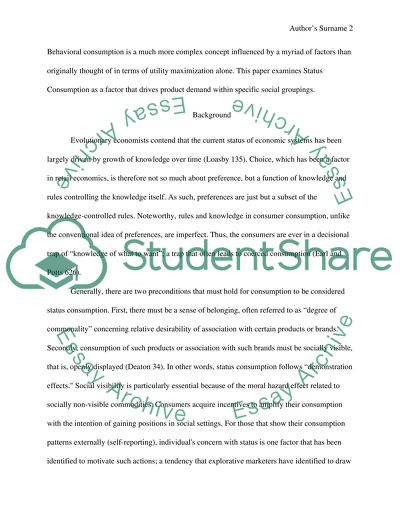Cite this document
(“Status Consumption as a Factor in Product Demand Research Paper”, n.d.)
Status Consumption as a Factor in Product Demand Research Paper. Retrieved from https://studentshare.org/macro-microeconomics/1607487-status-consumption-as-a-factor-in-product-demand
Status Consumption as a Factor in Product Demand Research Paper. Retrieved from https://studentshare.org/macro-microeconomics/1607487-status-consumption-as-a-factor-in-product-demand
(Status Consumption As a Factor in Product Demand Research Paper)
Status Consumption As a Factor in Product Demand Research Paper. https://studentshare.org/macro-microeconomics/1607487-status-consumption-as-a-factor-in-product-demand.
Status Consumption As a Factor in Product Demand Research Paper. https://studentshare.org/macro-microeconomics/1607487-status-consumption-as-a-factor-in-product-demand.
“Status Consumption As a Factor in Product Demand Research Paper”, n.d. https://studentshare.org/macro-microeconomics/1607487-status-consumption-as-a-factor-in-product-demand.


